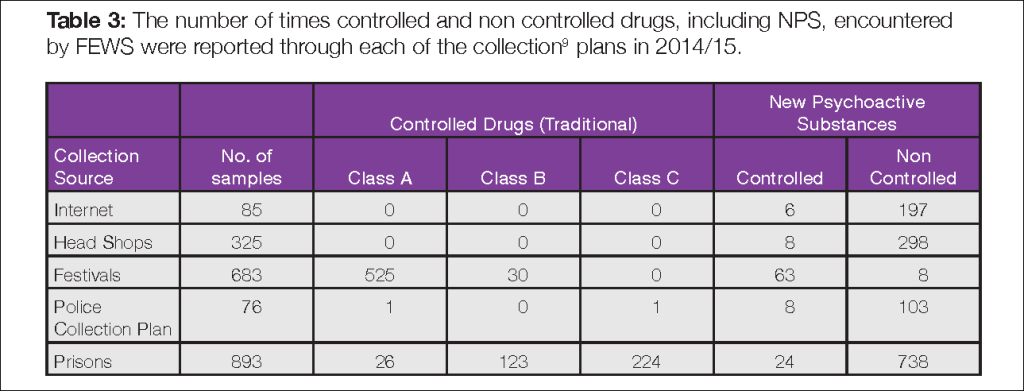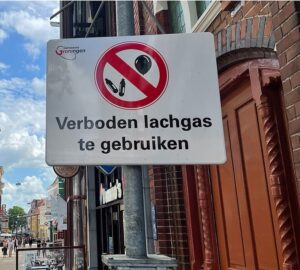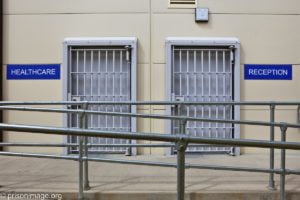What is FEWS?
The Home Office funded Forensic Early Warning System (FEWS) was set up in January 2011 in response to the emergence of new psychoactive substances (NPS), often referred to as ‘legal highs’.
The 2015 FEWS annual report (published on 17 September) summarised its work for the 2014/15 financial year. FEWS obtained and analysed 2,074 samples over the year from the internet, headshops, music festivals, the police and health clinics in order to identify NPS which are present in the UK or being offered for sale in the UK market.
[divider]
Key findings
- 1345 out of these 2074 samples were non-controlled NPS.
- Four of these were new NPS identified for the first time under FEWS and not previously encountered in the UK or Europe
- Unsurprisingly, products advertised as “legal” alternatives to already controlled drugs are not always legal – 8% of the NPS analysed were controlled drugs.
- Products marketed as ‘legal highs’ can also contain a number of different substances which increases the risk of harm to users. 55% of the samples analysed which contained NPS were identified as mixtures of two or more substances. Several samples (e.g. Charly Sheen and Chalk) contained four substances.
- A low proportion of controlled drugs were detected in NPS samples collected from headshops (3%), the internet (3%) and prisons (8%). In contrast, a low proportion of NPS were seen at festivals (10%), and of those samples, 89% were controlled.
Concerns around the emergence and continued availability of NPS are not limited to the UK drugs market. The EMCDDA reported that 101 previously unseen NPS were identified across the EU in 2014, compared to 81 in 2013, 74 in 2012, 49 in 2011 and 41 in 2010.
Synthetic cannabinoids remain the most popular form of NPS identified by FEWS as this table from the report shows:
(For further details on the emergence of synthetic forms of cannabis in the EU see this post.)
[divider]
Prison findings
FEWS collected samples from prisons in the South West and North West of England to find out which NPS were being used in prisons and whether or not they were controlled. As you can see from the table below, a very large proportion of NPS were found in the prison samples analysed:
The majority of the substances recorded from prison samples were not controlled and were mixtures of more than one different compound. The most commonly identified drugs from this data were 5F-AKB-48 and 5F-PB22, which are both synthetic cannabinoids.
[divider]
Conclusion
As most readers will know, the Government is currently pushing through legislation which aims to introduce a blanket ban on all legal highs.
Most experts doubt whether this will have a significant impact on the current popularity of NPS in the UK.









